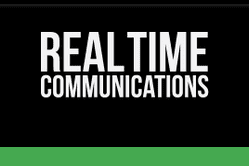PREVIOUSLY PUBLISHED ON TMCNET’S REAL TIME COMMUNICATIONS
Planon, a software provider in support of workplace optimization and Integrated Workplace Management Systems (IWMS), has released their predictions in Real Estate and Facility Management efficiencies for 2016.
“Many of the trends that will come into focus in 2016 already exist today, but their significance is expected to grow and become mainstream in the near future,” states David Karpook, Strategic Business Consultant at Planon. “Today’s facilities management and real estate managers face an increasing need to respond to the evolution of technology and sustainability, ensure compliance, and increase cost efficiency.”
Planon predicts that IoT opportunities will be made more applicable to the Real Estate spectrum in 2016. Therefore, it will be increasingly adopted by agents all over the world. Bottom lines will increase with the placement of affordable sensor technologies. Analytics data will be easily collected through occupancy of the workplace or meeting room. Additional IoT implementations point to better utilization of smart screens triggered by in app functionality or by room sensors, alone.
In the case of real estate, the amount of time an onlooker spends in each room may translate to sales potential, funneling sales interest data collected during the time spent in each room, individually. This data can be used to physically enhance the features that potential buyers enjoy the most and call out the needs for improvement in areas that guests most dislikes on the property. Doing so will lead real estate companies towards increased sales and shortened periods of closing. It will also provide insight as to where, exactly, a visitor may actually lose interest.
Workspaces can be checked for availability within a facility through the scanning of QR codes or the swiping of RFID tags. This will save time and face, while meeting with clients in a busy conference space.
Much of 2016 will see an increase in the use of mobile technologies for just about every phase in daily process. Not only are individuals now using mobile devices to make and accept payments on the go, but also team collaboration and communication can more frequently be made feasible. Integrations in communications tools are now allowing for better project management and workforce productivity through in-app tools and centralized clouds, allowing users to stay in just one application all day without the need to toggle between apps to complete a single function.
In fact, “Cloud delivery models will continue to transform the workplace,” claims the Boston-based software company. They will cut costs significantly for IT departments and eliminate the need for big-bulky equipment. Although true, there are many big businesses that are still skeptical about adopting cloud-based technologies in storing proprietary information.
Through mobility, employers are seeing more stretch-room in the physical workplace and may even save on operating costs with the ability to downgrade unnecessary expenditures. With flexible schedules, the workforce is being made more available at untraditional business hours and increasingly made available through “always on” technologies.
Workers are less stressed and therefore more productive. According to Planon, “More than 90 percent of respondents in research agreed that new workplace concepts will improve employee productivity.”
Finally, Planon predicts that building information modeling, BIM, will continue to increase in adoption. Their claim is that it will hold great promise for facilities management and real estate in the very near future.
Applying BIM and its methodologies to operations will allow more efficiency in management of the building space. This includes maintenance and construction during lifecycle process in providing a platform for real-time collaboration, logistics and quality management. Agents and construction superintendents will, themselves, be able to better predict the future of their own real estate empire.
Smart businesses and smart buildings will continue to make their presence known through the adoption of IoT and cloud technologies, allowing employees to be more mobile and embracing the alternative workplace. BIM-culture will become a norm, as teams will be impacted by better communications and interactive visuals in which promote efficiency.




